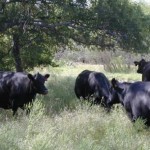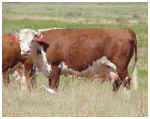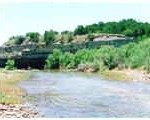
Project Leader: Richard Teague
email : r-teague@tamu.edu
Goals
- Broaden the understanding of requirements to sustain rangeland resources and economic viability
- Generate information to help producers improve management practices on rangeland
A Systems and Landscape Approach
Unless specifically designed to do so, most information is difficult to relate to the whole production unit of a farm or ranch business. By working at the “whole ranch” systems level and at time scales of 6 to 30 years, our results have greater relevance to the ranching community than if we had only short-term, small plot research. The project deals with soil differences and effects, hydrology, plant differences and effects, livestock, wildlife, biodiversity and profitability.
The systems approach also allows for a quantitative application of information developed beyond the site and times of individual experiments themselves. Decisions made without consideration of multiple consequences are not likely to achieve the complex results needed to fulfill the whole-system goals of individual managers or the larger scale needs of society. When assessing management practices, managers need to know the ecological and economic consequences of each choice. Decision aids are needed to help managers make complex decisions dealing with social, economic, and environmental goals.
We have validated rangeland simulation models using 50 years of data from working ranches and used them to examine the consequences of using different grazing and fire management under a wide range of physical conditions, weather sequences and management options, which would not be possible using field experiments alone. This approach allows us to assess the potential of different management practices to achieve economic and ecosystem service goals in these southern Great Plains agroecosystems.




